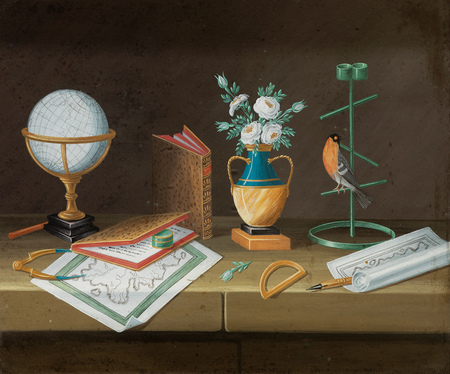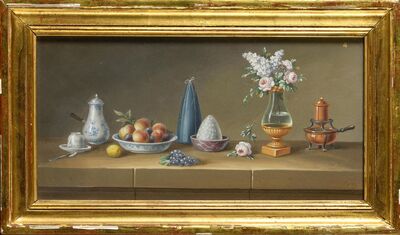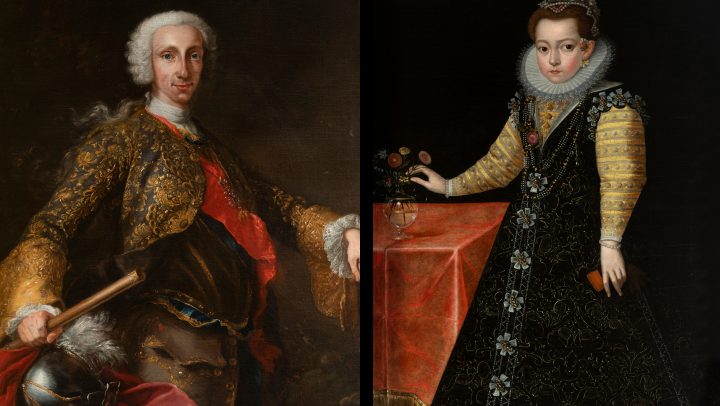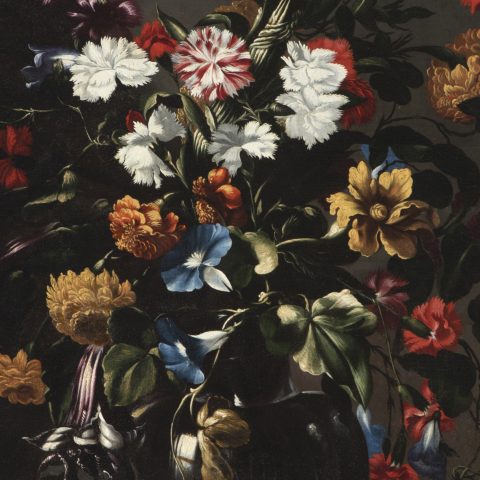From a private collection made up of authentic museum pieces, Setdart brings together in the Haute Epoque category masterpieces by stellar figures from different periods and places: Italian Renaissance, Neapolitan Rococo, Madrid Baroque and Danish Romanticism.
Let us first mention Portrait of a Girl, from the Italian school, belonging to a period of transition between the Renaissance and the Baroque, but in which the portrait formulas of the Cinquecento can still be appreciated.
Resolved with a virtuoso technique, with a tight brushstroke, the portrait becomes a true piece of goldsmithing. This canvas can be compared to the portraits of royalty painted by the painter Sofonisba Anguissola. More specifically, it is worth comparing it with the portrait of Isabella de Valois, wife of Philip II, commissioned to the painter from Cremona when she was her lady-in-waiting.
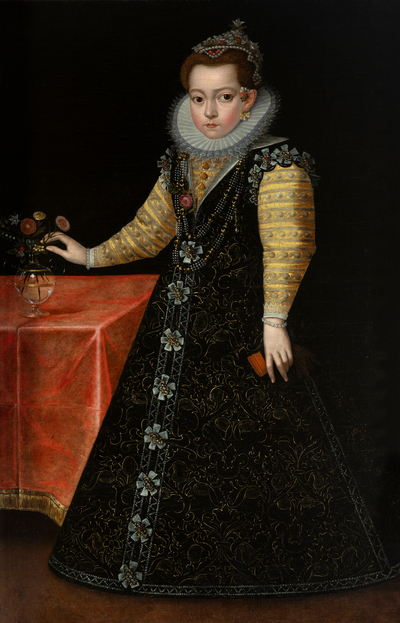
Note the stylistic and compositional similarities between the Setdart portrait and the one in the Museo del Prado: in both figures, the black velvet of their costumes is trimmed with precious stones and gold thread trimmings. The snowy facial ovals, illuminated by a subtle glow, are framed by a fine ruff and a tiara of rubies and gold. Even the posture of the figures and the gesture of their hands coincide: Isabel holds a portrait of her husband and the girl rests her hand on a bouquet of flowers.
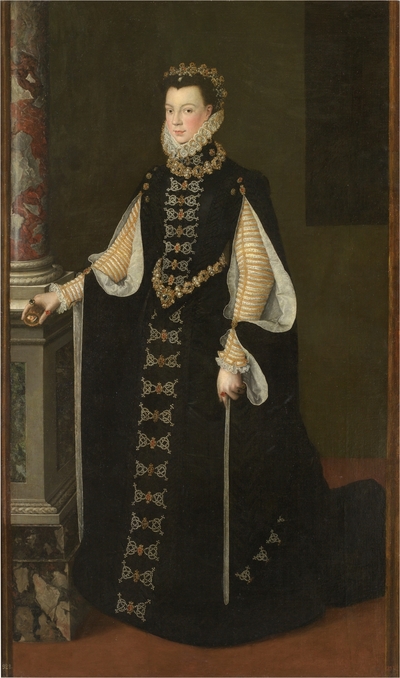
Another piece worthy of being in a museum, and which in fact is at the same level as a version of the same, preserved in the Prado Museum, is Portrait of Charles III, King of the Two Sicilies, by the Neapolitan Giuseppe Bonito. The work shows Charles III dressed in military uniform, wearing a helmet and carrying a flare. In the Prado painting one can appreciate a background that opens to the landscape, while in this case the attention to the figure is accentuated by highlighting it against a neutral background. In both cases the plastic brilliance of Neapolitan Rococo, of which Giuseppe Bonito was one of the greatest exponents, is expressed. The imprint of his exquisite style is evident in the satin color of the sumptuous velvet coat, in the gold thread brocades and in the fine lace on the sleeves.
The delicacy of his portraits opened the doors of the Neapolitan court to Bonito as a court painter. Around 1745 he portrayed Charles VII of the Two Sicilies, future Charles III of Spain, and his wife Queen Maria Amalia of Saxony in two portraits also kept in the Prado Museum.

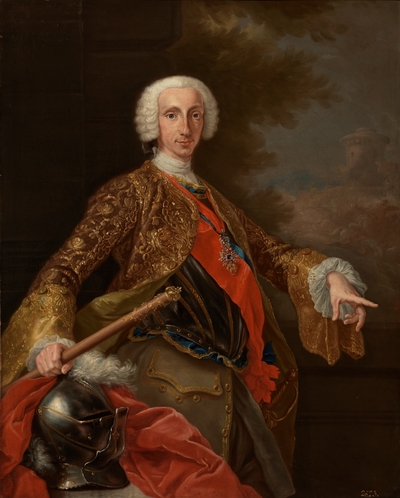
Wandering through the halls of the Prado Museum, specifically in the rooms dedicated to Flemish painting of the seventeenth century. In them we find a collection of paintings with scenes starring monkeys, a theme worked by artists such as Pieter Brueghel and David Teniers the Younger. To the circle of the latter belong the two oil paintings on copper (“Escenas costumbristas con monos”) that are being auctioned in our high period collection at Setdart. These interior scenes (monkeys eating, learning to play instruments, baker monkeys…) served the artists to ridicule man’s follies, but sometimes they also highlighted his most endearing aspects.
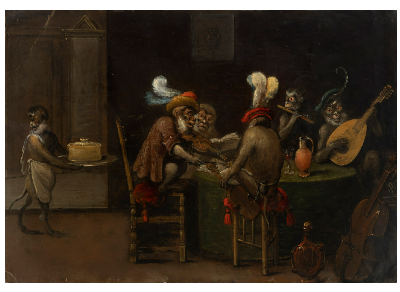
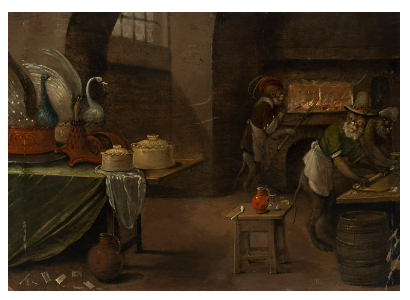
Continuing with the creations of chamber painters, see the canvas of Juan Carreño de Miranda St. Bernard BreastfeedingThis is a theme that this distinguished painter of the court of Charles II treated with subtle variations in a painting preserved in the Museum of the parish church of the Collegiate Church of Pastrana. This oil painting, fully baroque in style and execution, narrates the scene of the saint’s life in which the Virgin appeared to him to nourish him with her breast. A mystical triangle is established between Mary, the Child Jesus and the Saint. The richness of the chromatic nuances, the luminosity of the glory break and the tenderness of the plump cherubs are typical of the painter’s plastic work.
Miranda had important ecclesiastical clients, such as the cathedral of Toledo, in addition to being a court painter. Today it is represented in the world’s major museums, from the Hermitage to the Louvre and the Prado.

The Neapolitan Baroque still life school, highly appreciated in the antiquarian market, as well as among collectors and art historians, enjoyed a spectacular development, leaving behind the splendors of the 16th century and progressing within a fully Baroque style in which Gasparo Lopeztogether with Tommaso Realfonso and Nicola Casissa, occupied an unquestionable place.
Precisely, it is a pair of vases by Gasparo Lopez (nicknamed Gasparo Dei Fiori) another of the pieces to be highlighted within Setdart’s ongoing tenders on February 20th and 21st. The exuberant bouquets contrast with the simple parapets and vases that hold them.
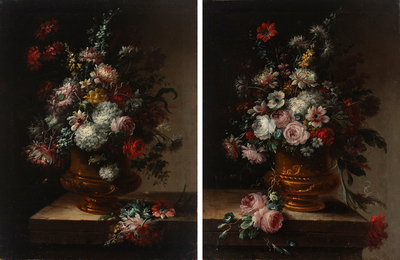
We now change time and place to admire an iconic painting by the nineteenth-century Danish artist Harald Jerichau, The Plain of Sardis, Asia Minor. In theme and composition, this cornerstone of Danish Romanticism follows the same model as Jerichau’s 1878 painting, The Plain at Sardes, now in the Statens Museum for Kunst in Denmark.
Harald resorted to this view on numerous occasions and popularized the scene, which has even become the cover of Birgitte Fink’s biography of the artist.
In both versions, the sublime landscape transcends the orientalist genre painting, taking us into a subjugating atmosphere. The presence of the columns provides a documentary element, almost Vedutist, but the chromatic warmth takes us into a panoramic view of an almost mystical mood, projecting a lyrical vision of Turkey.
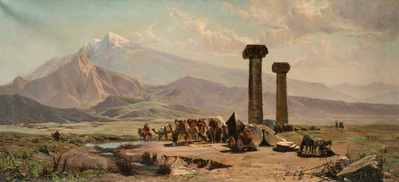
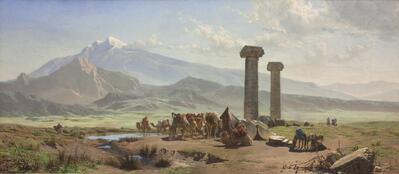
As the last piece of our tour through the great works of our high period gallery, all of them from a private collection that was forged over decades of research and careful selection, let us mention a unique pastel of allegorical theme, of French school and rococo period, for which the painter was inspired by the still lifes of Johann Rudolph Feyerabend. Symbolism, trompe l’oeil and virtuosity are combined in this enigmatic still life.
